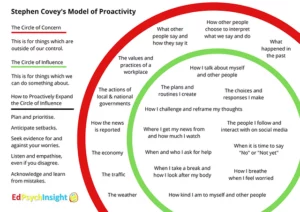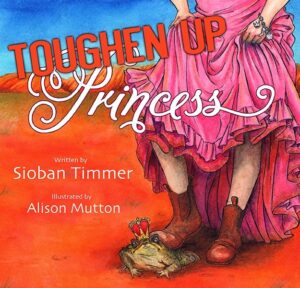Toughen Up Princess and other fairy tales from the Workplace
Image of cover of “Toughen Up Princess”- by Perth author Siohan Timmer
You hear it everywhere these days. That we’ve all become “woke” and “soft”. That we all just need to “toughen up” and “be more resilient.”
Welcome to the 2023 workplace. Where workplace bullying not only survives, but thrives.
Despite workplace bullying being enshrined in Australian employment law, and it being considered a hazard under Australian safety legislation, the behaviours continue unabated in some organisations.
For some, there is still a genuine lack of understanding on the difference between performance management and bullying.
For others, there is a genuine lack of care about whether behaviour is defined as bullying or not.
For the latter group, it’s a “toughen up princess” approach. Does it matter if there is bullying, so long as the work continues? In fact, a bit of fear often produces better short term results, does it not? (Evidence very clearly show that fear, in fact, does not produce good long term results).
So what do you do when your organisation doesn’t believe that bullying is a thing? When the usual processes of grievances, and investigations don’t go anywhere? Where your boss is the bully?
Things to consider first off
- Are you safe? What is the impact of the behaviour on your mental and physical well being?
- Have you documented the behaviour – including how it meets the definition of bullying? Can you clearly differentiate how this is not every day management/performance management?
- Have you checked your internal policies – such as grievance, workplace behaviours, code of conduct? What do they say about bullying in the workplace? What do they suggest you do?
- Have you endeavoured to get the bullying to stop?
- Consider what records you keep. On the one hand, memories are very fallible and whilst we think we will always remember, we know the brain doesn’t remember accurately. On the other hand, when you’re actively looking for examples of behaviour to record, a negativity bias can set in and everything can seem like bullying. PositivePsychology.com states:
What Is Negativity Bias?
Negativity bias refers to our proclivity to “attend to, learn from, and use negative information far more than positive information” (Vaish, Grossmann, & Woodward, 2008, p. 383). We can think of it as an asymmetry in how we process negative and positive occurrences to understand our world, one in which “negative events elicit more rapid and more prominent responses than non-negative events” (Carretié, Mercado, Tapia, & Hinojosa., 2001, p. 75).
Among other things, it can explain why we often:
- Recall and think about insults more than compliments
- Respond more – emotionally and physically – to aversive stimuli
- Dwell on unpleasant or traumatic events more than pleasant ones
- Focus our attention more quickly on negative rather than positive information
Even when we experience numerous good events in one day, negativity bias can cause us to focus on the sole bad thing that occurred. It can lead us to ruminate on small things, worry over having made a bad impression, and linger on negative comments (Lupfer, Weeks, & Dupuis, 2000; Chen & Lurie, 2013; Wisco, Gilbert, & Marroquín, 2014).
Where can you go for advice and support?
- What internal support mechanisms (including grievance contact officers, HR, Health and Safety) are available?
- What advice/support can your Manager/colleagues provide you?
- Are there any up-standers who can provide you support?
- If you’re a member of a union or professional body – do they have an advice line or support processes you can access?
- What external support mechanisms are available? (EAP/External grievance organisations)
- Do you have a good GP or counsellor/psych – what support can they provide?
- Consider Human Rights and Equal Opportunity Commission or free legal clinics – what advice can they provide?
- What wellbeing practices and resources can you access that might assist? (Note – this isn’t about becoming “more resilient” but more about how you manage the situation and create the best possible physical and mental state for yourself given the circumstances).
- Remember that family and friends can be an excellent source of advice, but can also exacerbate how you are feeling with their feelings of outrage.
Do you want to escalate it?
- Have you used the internal grievance processes? If you believe it’s not safe to do so – is the behaviour formally recorded with someone in the organisation?
- Have you considered lodging a complaint with WorkSafe? This can be anonymous but that will limit the degree of investigation that they’re able to undertake.
- Have you considered a stop bullying order from the Fair Work Commission?
The Takeaway
- Getting bullying resolved in an organisation that doesn’t believe in such a thing can be difficult. Whilst there are external organisations that are there to provide support, sometimes the very process of escalation (internally and externally) adds to the stress.
- Sometimes, the better thing to do is to decide that the organisation isn’t right for you and look for alternative work. Yes, it’s not right that the person who is being bullied has to leave.
- Consider your circle of influence/control. What can you control?

Thanks to EdPsychInsight for the image
- The good news is that there is now legislation that underpins the definitions of bullying and we are becoming much clearer on the impact of bullying on the individual and on the culture of the workplace. The tolerance for bullying more broadly is changing – but progress is slow.
More Resources..
Fair Work Commission – Stop Bullying Orders
Making a complaint to WorkSafe WA
Tools and information on bullying – Worksafe WA
Want more?
If the above has whetted your appetite, and you’re keen for more.. Here are some ideas:
Does leadership interest you? You can sign up to my FREE seven day “Be a Better Boss Challenge” by clicking here. And you can click here to buy my book.
Want to chat? Click here to get in touch.
Want some help in meeting your goals? Sign up to the permission to dream programme, by clicking here.
Want more to read? You can read any of the 300+ blog posts on this site, by clicking here.
See you soon,



